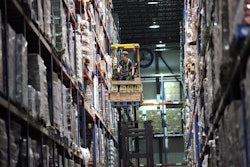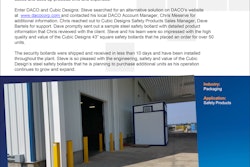
Emerging technologies, new processes and tools are improving supply chain operations to create unprecedented efficiencies. But supply chain excellence—the sort of step-change that can be transformative for businesses—cannot happen without changing behavior and engaging employees responsible for activating the strategies that make a difference. Corporate leaders are learning that it is not enough to have the right systems in place, and to hire and retain the right people. Today, supply chain innovation is about using technology to harness the collective talent across an organization: Connecting team members can help develop new solutions, pre-emptively identify risks and execute.
Here are three ways that smart executives are leading the way in supply chain improvements by starting with human capital.
1. Collaboration and Transparency
Structure matters, but collaboration is king. We know that highly effective supply chains exist across a range of different business environments, from those that are highly centralized to those with more distributed decision-making authority. But a common—and often overlooked—factor in the most effective, end-to-end systems is a culture of collaboration.
Here’s why: One of the biggest barriers to creating a fully optimized end-to-end system is a lack of transparency among functional groups. Improving supply chain performance means optimizing across functional groups, rather than within each group, but this can’t happen if team members do not understand how their work impacts and is affected by other functions in the supply chain.
This is particularly true of middle managers. Procurement personnel, for example, may view their role as independent and objective. But at scale, procurement decisions can have a significant impact on the entire supply chain. If mid-level procurement managers do not understand the processes that precede and follow their function, and collaborate with their peers in other functional areas, they cannot possibly make decisions that optimize for efficiency across the supply chain.
Historically, corporate training for middle management focused on training for discrete roles or challenges. More senior executives were developed into leaders, but mid-level personnel were left out of decision-making outside of their domain—and were ill-prepared for cross-functional collaboration. This is not a failure of middle managers. It is a symptom of an approach to corporate learning that focused on the few, rather than engaging individuals at all levels of leadership through human capital investments that support collaboration and communication. The result? Millions of dollars of lost opportunity and compounding challenges throughout the supply chain.
Cross-functional collaboration does not simply happen, it is the result of intentional steps to create a culture that values collaboration, as well as a structure that supports it across functional roles and silos. Today, new models of online learning and a deeper understanding of the science of learning in organizations allow us to bring high quality learning experiences to a much broader set of stakeholders across an organization.
2. Disseminating Known Knowledge and New Knowledge
Improving the supply chain requires both known knowledge and new knowledge. Known knowledge includes best practices that can be disseminated to leaders at all levels and results in improved organizational processes. Sharing known knowledge is, of course, critical to the professional development of leaders within an organization.
While known knowledge is necessary—it is rarely sufficient. Unlocking the potential within a supply chain depends on the creation of new knowledge in the form of insights, questions and solutions created by cross-functional teams.
New knowledge is only created through collaboration. Known knowledge needs to be improved over time. But the dissemination of known knowledge and creation of new knowledge do not happen automatically. Middle managers are critical to that process, but they must be empowered with both time and tools to facilitate this exchange of information.
Companies like Coca Cola, Wal-Mart and Bare Minerals are leveraging technology to facilitate more meaningful communication to develop and share knowledge across functional areas. Employees are tapping into expert-led, on-the-job training and leadership development via social learning platforms. They are using online forums to collaborate with peers across verticals. Colleges and universities—like Penn State—are packaging and delivering expert-led courses online to help supply chain professionals drive rapid innovation in planning, manufacturing and logistics.
3. Hiring Priorities and Realities
While functional expertise—say a strong background in procurement or logistics, for example—is important, we’re now learning that too great an emphasis on content knowledge within hiring can actually impede supply chain outcomes.
Research now tells us that typical employees today have to interact with 10 other individuals on a daily basis to accomplish their job well. Soft or non-cognitive skills are more important in an environment in which collaborative learning rules. The ability to effectively connect and communicate with co-workers can certainly be improved, but should also be elevated in the hiring criteria for supply chain workers. The most effective organizations in supply chain are hiring not just for expertise, but also targeting workers who are flexible, eager to learn and understand the value of collaboration.
In today’s on-demand economy, supply chain excellence is critical to a company’s success. Senior leadership must rely on frontline leaders and managers to deliver end-to-end integration, anticipate and mitigate risks, and develop innovative business solutions. Technology is just one piece of the puzzle, but activating smart human capital strategies and cultivating a culture of collaboration are critical components in achieving supply chain success.



















